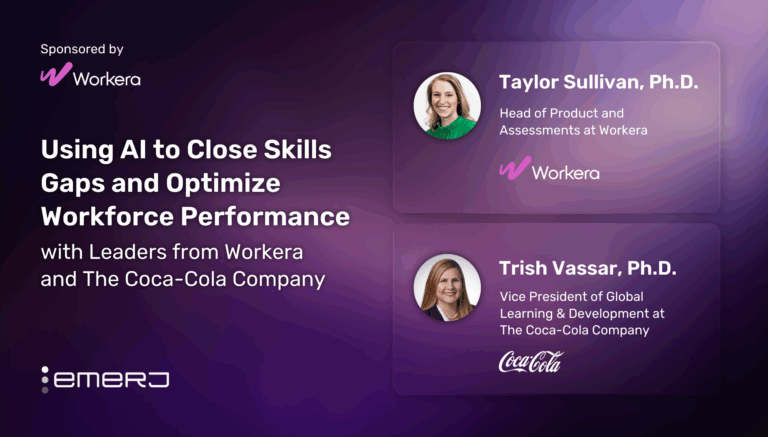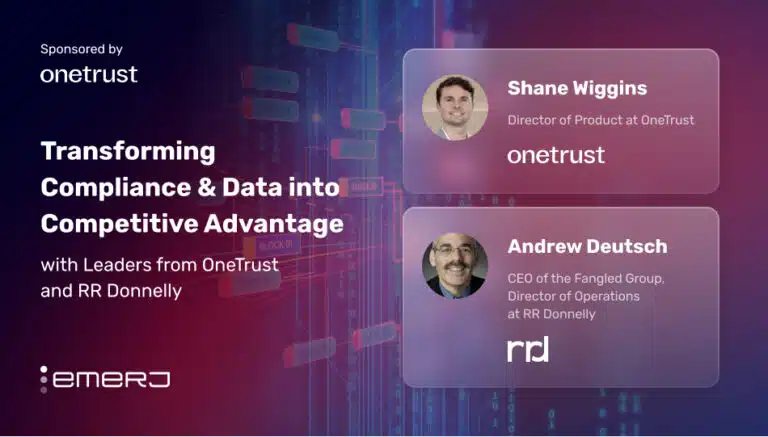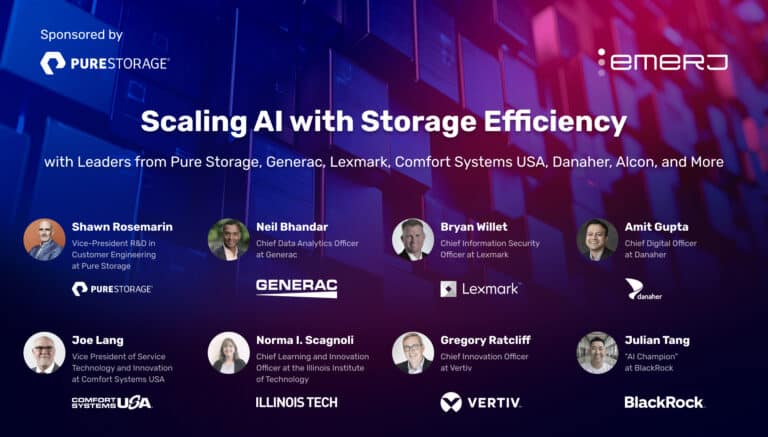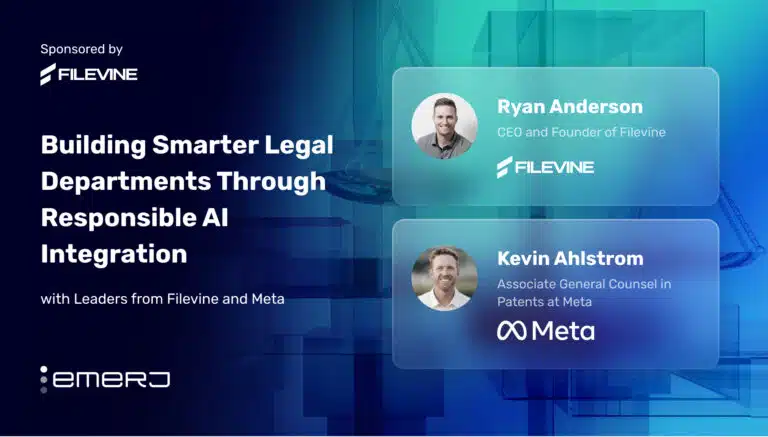The main difficulty in starting with AI is knowing exactly where to begin. As we will elaborate in this article, there are many exaggerated and misleading claims about the various types of AI technology. Moreover, some executives are too trigger-happy, wanting or needing to integrate AI into their enterprise sans a foundational education or understanding of the challenges.
Knowing what questions to ask can be a good starting point: What is my current level of AI knowledge? Am I capable of making a sound judgment as to the organizational readiness for AI? What are the processes or workflows ripe for automation? How do I choose a reliable first AI project, and on what basis?
On Emerj’s AI in Business podcast, we’re fortunate to have access to enterprise AI leaders from Fortune 500 companies and leading tech firms. In many of our interviews, we ask them directly what questions best helped them find the proper framework to deploy their organizations’ first AI projects successfully.
Among those leading voices in AI enterprise adoption is David Carmona, General Manager of Artificial Intelligence and Innovation at Microsoft. He focuses on driving the legendary tech brand’s AI products and services business. David and his team faced daunting challenges in deploying the first AI projects at Microsoft – not the least of which included being pioneers in setting the standard for AI adoption across the technology sector at the dawn of the discipline.
David recently appeared on the AI in Business podcast to discuss his hard-fought wisdom from these experiences and what every enterprise AI leader should know about launching their first successful AI projects. In this synthesis of his conversation with Emerj CEO Daniel on the podcast, we derive and examine three principle takeaways:
- Avoiding AI hype through prioritized education of business leadership: The foundation of a core AI education for noncoding business leaders begins with understanding machine learning capabilities of automation, perception, and cognition.
- Determining requisite data talent: With more complex integrations of AI, David presents a three-question framework, centered around proprietary processes, data, and property, to determine the requisite skills and resources required.
- Choosing an impactful, stakeholder-driven, initial AI project: “Pilot purgatory” is best avoided by targeting a process that is both ripe for automation and sets the standard, then wasting no time in involving decision-makers in that process as stakeholders from the beginning of the pilot project.
Listen to the full episode below:
Guest: David Carmona, General Manager of AI, Microsoft
Expertise: Product Development, AI Strategy, Business Leadership, Autonomous Systems, AI at Scale, Software Engineering
Brief Recognition: As Microsoft’s GM of AI, David has been responsible for driving Microsoft’s AI products and services across global markets. He has authored a book released by O’Reilly Media titled The AI Organization.
Avoiding Hype Through Education
In David’s experience, concrete knowledge of AI’s capabilities among business leadership is the principal way organizations distinguish the signal from the noise in the AI market. AI is a business, and as such, some vendors will overpromise and underdeliver. As with anything technical, a foundational education on AI technologies can assist leaders in making better buying decisions.
However, enterprise leaders do not necessarily require a high level of AI knowledge to deploy AI technology successfully. While additional knowledge is necessary for specific advanced implementations, David states that, for the more common use cases, some developer knowledge and a willingness to learn are all that is needed.
Moreover, David says that he focuses his advice to noncoding stakeholders based on three primary areas of AI, all centered around machine learning, to executives wanting to get started:
- Automation: How machine learning is used to automate previously manual tasks using experience or data.
- Perception: The ability of machines to understand the world around us, including more detail on AI capabilities such as computer vision, speech recognition, and text understanding, which David says are the first steps for any enterprise to implement AI.
- Cognition: The capability of machine learning to help make decisions and improve processes using techniques such as regressions, predictive modeling, and classification.
“The first thing that I do is focus on the core capabilities,” David says of his communications with leadership and c-suite members among his stakeholders in AI projects. “I try not to talk about AI as a technology, but instead, as a concept that can give you new capabilities that haven’t been available to you before.”
Determining Requisite Data Talent
When determining the requisite level of data science talent, David says it is all about an organization’s current technological maturity level and the category of implementation adoption teams are considering. Pre-built AI services don’t require data science expertise, only a knowledgeable developer. In this case, the in-house developer can customize said models and connect them to your business systems.
However, if you are looking at using AI to improve, change, or redefine a business process, data science knowledge talent is a prerequisite. Yet, as many central processes are similar across enterprise types — e.g., customer service, marketing, manufacturing — many out-of-the-box SaaS solutions require only a capable in-house developer.
“You have this concept of SaaS AI that, in many cases, with a little bit of customization without requiring deep knowledge of data science, you can customize for your business. And those are very powerful,” David tells Emerj CEO Daniel Faggella.
David uses a three-question framework to help adoption teams determine the necessary level of data science expertise:
- What are those processes that your team members have unique experience in developing?
- Do you have specific data nobody else has on a particular process?
- Do you have intellectual property or a product that is totally unique to your company?
Notice that all three questions center around the competitive advantages of a firm. In such a case, it is best to consult a data science and solutions expert that caters to your particular industry, as a custom AI solution is likely required to leverage that data advantage.
Choosing Meaningful Initial AI Projects and Involving Stakeholders From the Start
David passionately explains that an enterprise’s first AI project should be impactful and challenging while serving as an excellent first step for future undertakings:
“We always say, ‘Start small,’ but at the same time, you should look at it as the first step of your inner journey. Don’t look at that first AI project as just a pilot in some random place where you think you’re going to get some benefits in the short term. Look at your long-term strategy. Think about where you want to be in three years. How you want to redefine your company with AI, and pick a first AI project that is a step in that direction.”
– Microsoft General Manager of AI, David Carmona
David specifically warns of ‘pilot purgatory,’ where an enterprise never launches a successful solution that delivers meaningful results, despite all of the talk and planning.
He provides an example of this pilot purgatory from his own direct legacy enterprise experience: Microsoft’s finance department sought to use AI to transform a finance process. While the solution was ambitious and excellent as an idea, it didn’t work. The reason? The finance department was not involved in the process from the beginning.
David gives this example to highlight the importance of a “business process first” approach to AI planning and implementation, as opposed to technical capacities first and business results second.




















